
1-800-210-8170
MON-SAT 6AM-5PM PST,9AM-8PM EST24/7 ONLINE

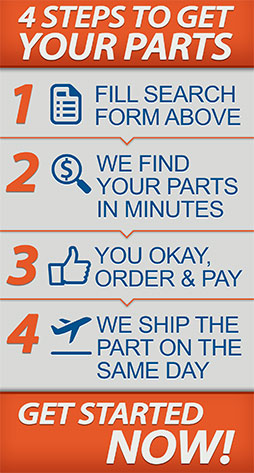

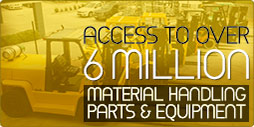

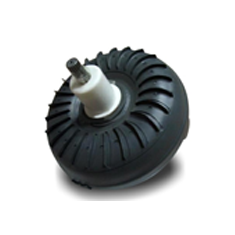
We distribute an extensive selection of FORKLIFT TORQUE CONVERTER parts for all makes and models. We ship directly from various warehouses located all over North America to provide the fastest shipping at the most affordable prices.
You could find a torque converter in every forklift model that uses a hydraulic transmission to function. This crucial device allows your forklift's engine to communicate with the transmission box.
That's why when one of these devices isn't performing as it should, the chances are high that you'll find the vehicle parked on the side until it gets fixed or a new torque converter is installed.
If your forklift's torque converter is no longer what it once was and is only causing you more and more problems, then don't think twice and replace it. At Solid Lift Parts, we'll provide the best torque converter for sale deals your lift truck needs at the best price and in the shortest possible time.
At Solid Lift Part, we know how frustrating it can be to find the right forklift torque converter. Many of our current customers used to spend hours and hours trying to find the right replacement, many times without reaching a satisfactory result. But thanks to our quick and reliable services, they no longer had to pass through those kinds of annoying situations.
Let us do the hard work for you. With Solid Lift Parts, you will get the chance to purchase the ideal new or rebuilt torque converter for your lift truck. No matter the brand or year of the model, each torque converter for sale in our stock is made to last.
We count on a wide network of warehouses throughout the country and a constantly updating database of spare parts. Solid Lift Parts will always be here for you.
The torque converter is an engineering marvel that allows many forklift models' automatic hydraulic transmission boxes to engage and disengage with the vehicle's engine without fear of either being compromised.
Have you ever wondered what could happen if the hydraulic transmission was connected directly to the engine? Nothing good! Without a torque converter between the automatic transmission and the engine, you could overkill the engine when pressing the brake pedal.
That's why in terms of cost, it is preferable to do quick service or replace a defective forklift torque converter on time instead of handling much more severe problems such as a damaged engine or a broken hydraulic transmission box.
Take care of your investment, and make the right maneuver on time (whether it's buying a new or a rebuilt torque converter.) It will save you time and money in the long run. At Solid Lift Parts, we're here to support you and make your shopping experience as easy as possible.
We have years of experience that validate us as one of the best forklift spare parts distributors. So if you're looking for a great "forklift torque converter for sale service," there's no better place than Solid Lift Part to get it.
Have you ever felt a sudden jolt while driving your automated forklift? If so, it was probably your forklift torque converter telling you something was going wrong. Sometimes it's easy to get caught up in the working dynamics and overlook the symptoms that indicate the torque converter needs to be checked.
When this happens, there probably won't be more choices but to start looking for "torque converter for sale ads." Here are the main situations in which you should consider replacing your current forklift torque converter:
If you notice that the forklift torque converter is making more and more squeals, then you better remove it from the truck and let your mechanic inspect it. If you prolong this situation for too long, you'll surely have to buy a new replacement. But, remember –Handling this will be preferable to trigger more complex failures.
A contaminated transmission fluid is not necessarily a problem triggered by a bad torque converter, but it will affect it in the long run. If the hydraulic transmission is damaged and contaminates its transmission fluid, it will negatively affect torque converter components such as the stator's bearings and turbine's fins.
We called stall speed the RPM needed to spin the torque converter's internal mechanics. When the torque converter is faulty, it does not respond to the designed RPM for which it was intended. Over time this will speed up its deterioration, which is why it should be replaced as soon as possible.
Some may disagree with us on this, especially when the budget is tight, but replacing the forklift torque converter when coupling a new hydraulic transmission will help secure your investment. You changed the transmission for a good reason, and surely your current torque converter was affected in one way or another as well. If you can't afford a new one, you may want to consider going for a rebuilt torque converter.
The main forklift torque converter wears cause is, without a doubt, lack of maintenance. Unlike other items whose wear is unavoidable, such as brake shoes or throttle cables, these devices can last as long as the vehicle's life expectancy. Although this is not always reached since many factors are involved, people start looking where to find a forklift torque converter for sale.
That's why, whether it's a new or rebuilt torque converter, here are some tips to keep in mind to prolong its lifespan:
In any case, Solid Lift Parts will always be here to cover your back. Every forklift torque converter for sale in our stock meets all industry standards to keep your engine running smoothly for years under minimum maintenance requirements.
Before you start looking for a forklift torque converter for sale to purchase, we suggest you keep these three things in mind:
Purchasing a rebuilt torque converter is common practice. Depending on the model of forklift you have, the cost of an OEM part like this can be quite high. And not everyone can afford it. Sometimes even prices of aftermarket equivalents can cause anyone to think twice.
Here is where a rebuilt torque converter comes into play. Many specialized centers are rebuilding these forklift torque converter assemblies, leaving them as new. Their detail and quality are such that they are sold with a guarantee that supports them.
At Solid Lift Part, we have been supplying rebuilt torque converter assemblies for years with resounding success. The key lies in acquiring them from a reputable distributor whose trust has been validated over the years.
If it is your first time with us, it is quite normal for you to wonder what we can offer you that others do not. While there's no substitute for firsthand experience, let us give you a few reasons why Solid Lift Parts will be your best shot when purchasing a new torque converter for your lift truck.
You could get each forklift torque converter for sale in our store for a reasonable price. With our services, you don't have to waste countless hours looking for the right replacement.
We have spare parts for the most recognized forklift brands, and whether you are looking for a new aftermarket or an OEM rebuilt torque converter for your lift truck, we have you covered.
Find the right replacement, especially when it's hard to find so many options out there. Trust us; we know it firsthand. That is why we offer you the comfort of acquiring exactly what you need at the terms you need it in the shortest possible time.
We have the infrastructure and the best people to make it possible. Our extensive database allows us to quickly find the right replacement to guarantee your lift truck always stays working at its best.
Time is money! The more time your forklift spends stopped, the more money that you are not producing. At Solid Lift Parts, we make sure to keep your losses at a minimum. Thanks to the fact that we have a large network of warehouses throughout the country, each forklift torque converter for sale in our stock could be in your place in the shortest possible time.
Forklift Torque Converter Photos
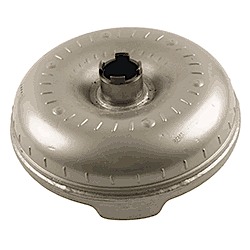
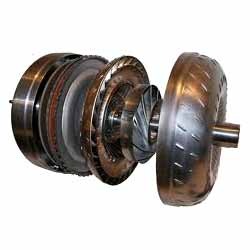
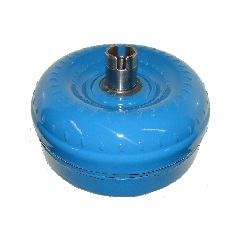
*Manuals and parts books are not owned by Solid Lift Parts inc. and are presented for reference purpose only.